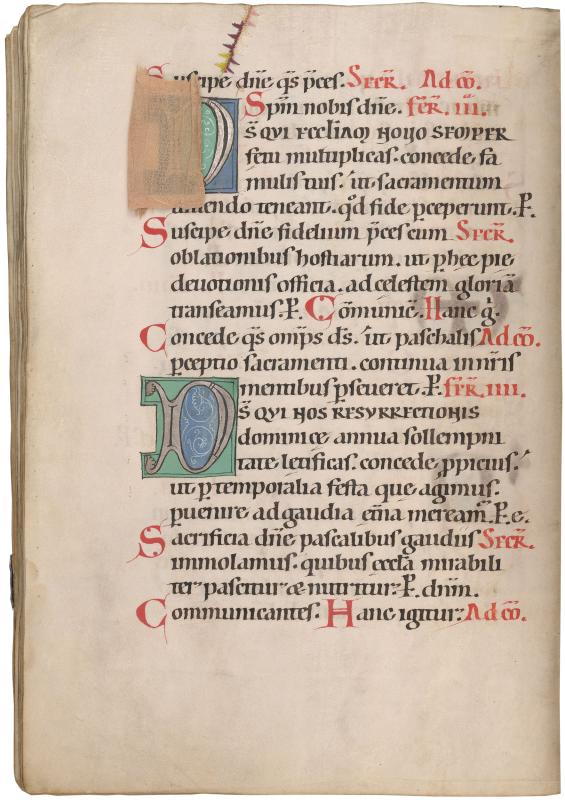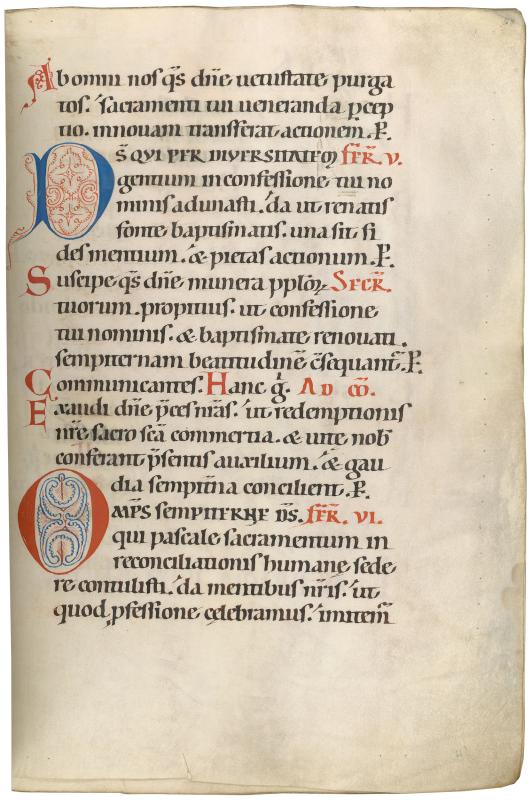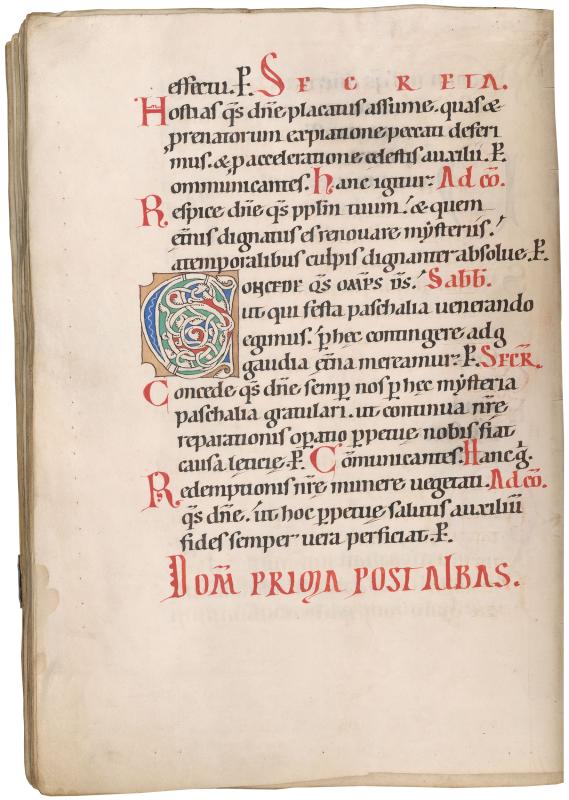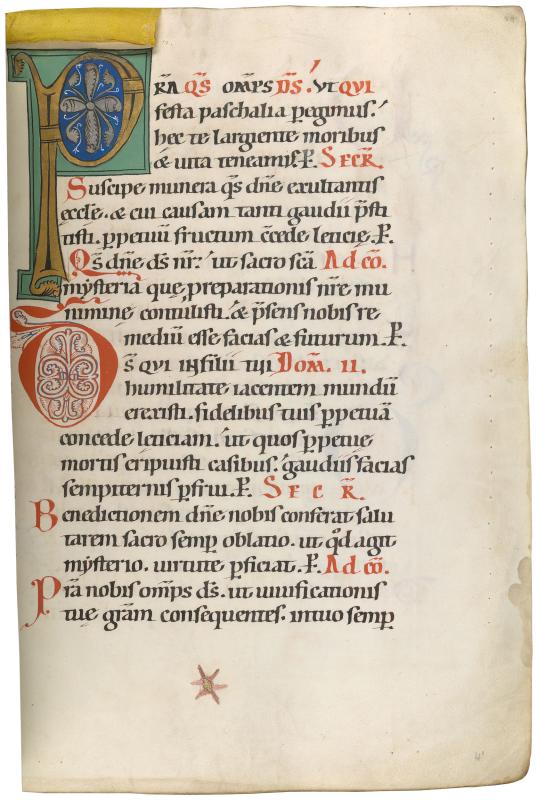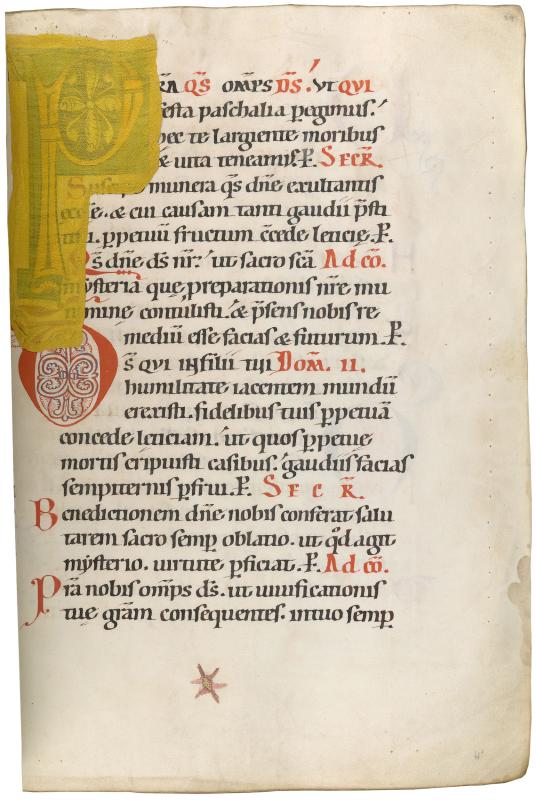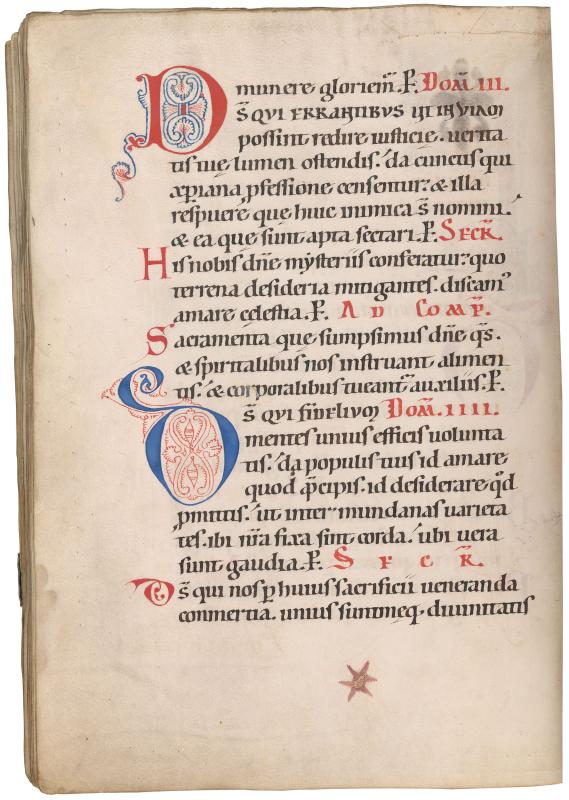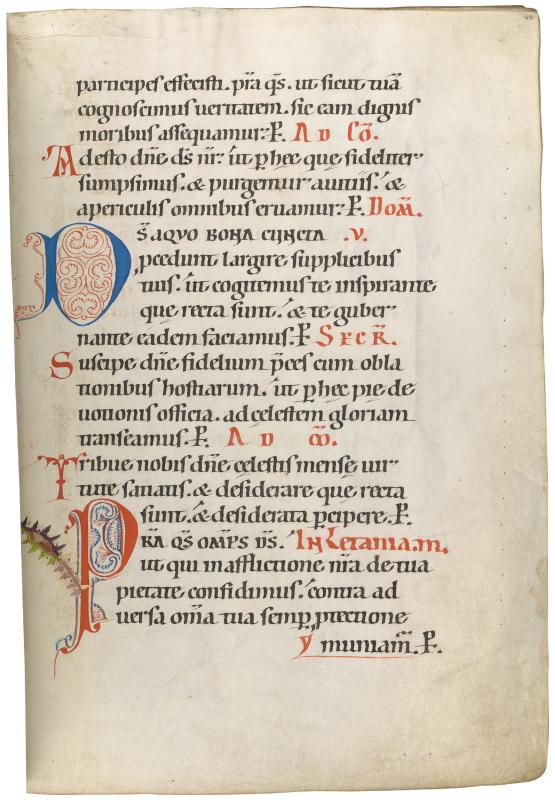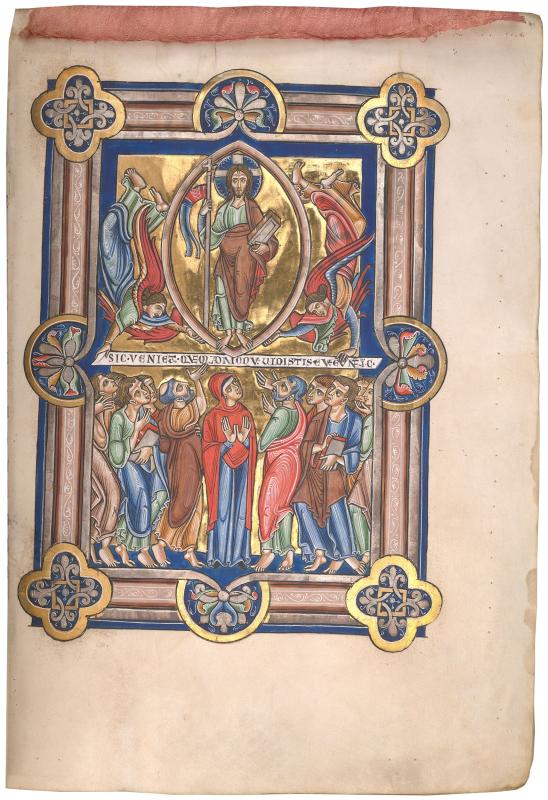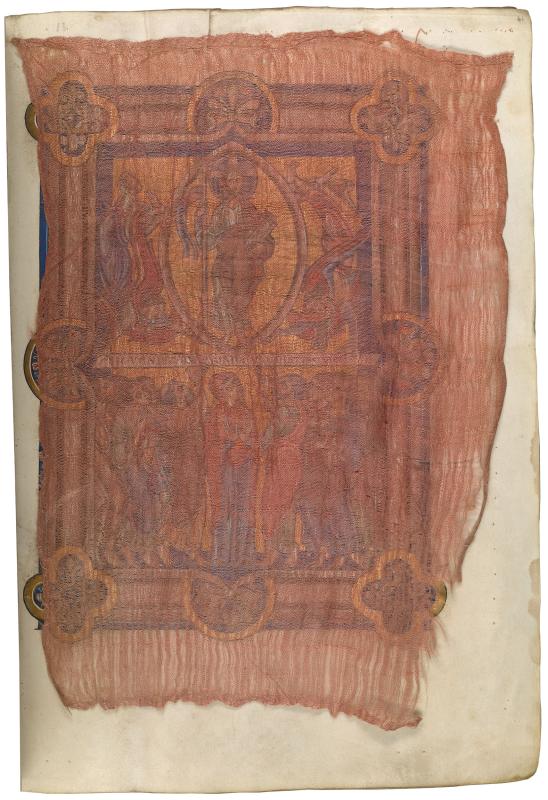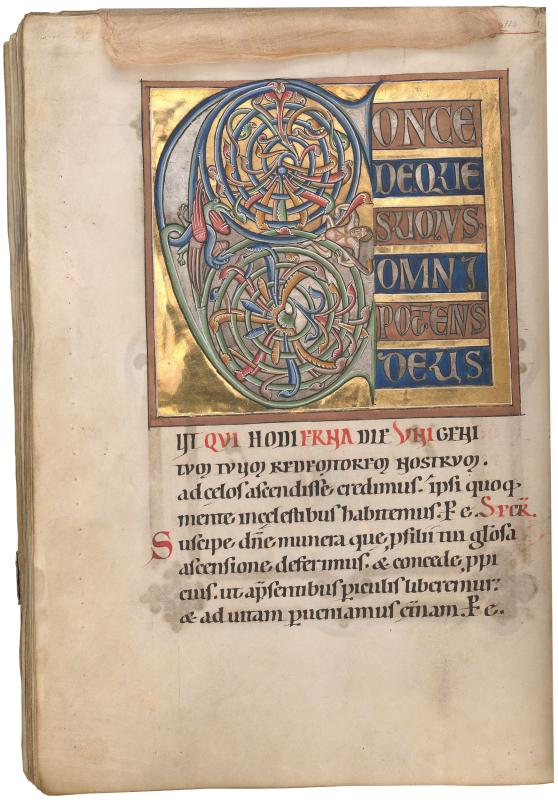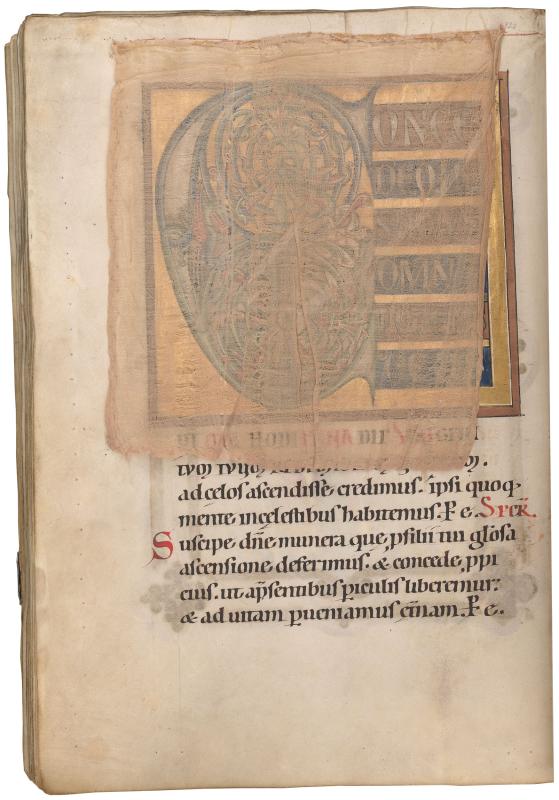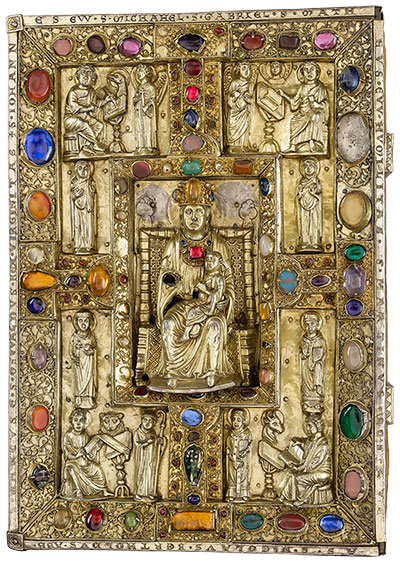
The Berthold Sacramentary is named after Berthold, the abbot of Weingarten from 1200–1232 who commissioned it. From every point of view the codex (ca. 1215–17)—whether for its cover, illuminations, or even script—is the masterpiece of Weingarten illumination. It is also the most luxurious German manuscript of the time and a major monument of Romanesque art. Although the manuscript was formerly known as the Berthold Missal it is, in fact, a Sacramentary. Unlike the Missal (which has all of the texts recited by the priest at Mass), the Sacramentary contains only those for the celebrant of high Mass. The book still retains its original jeweled binding, which includes representations of the abbey's patron saints (Martin and Oswald) and Abbot Berthold himself.
Most of the twenty-four full-page miniatures are by an exceptionally forceful and expressive artist who has been named the Master of the Berthold Sacramentary, after this book. The richly applied gold leaf is mirror-like, and the original curtains placed over the miniatures and the initials to protect the gold leaf are still sewn in the manuscript.

